The Peloponnese is the most popular tourist region of mainland Greece. The proximity to Athens, beautiful resorts and interesting sightseeing opportunities attract many tourists to the Peloponnese all year round. Historically, the most important archaeological sites of Greece can be found here, including Olympia, Epidaurus and Mycenae. The region, surrounded on all sides by the sea, offers amazing beaches. The most famous areas are Nafplion, Gythio, Monemvasia and Pylos. The region is the center of ancient culture and it has been inhabited since the prehistoric years.
The ancient city of Argos
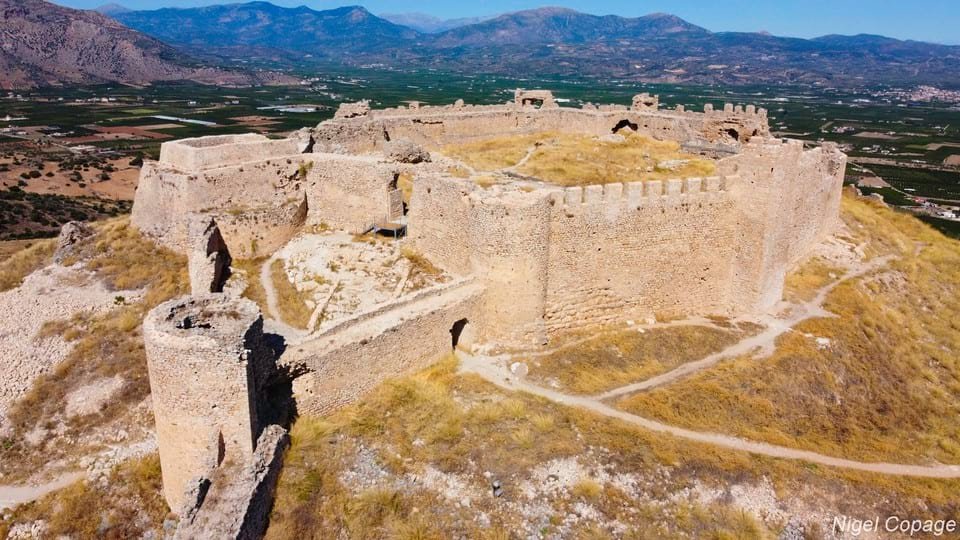

Ancient Argos, located in the Peloponnese, was a major Mycenaean settlement in the Late Bronze Age (1700-1100 BC) and remained important throughout the Greek, Hellenistic and Roman periods until its destruction by the Visigoths in 395 AD.Argos is considered one of the oldest continuously inhabited cities in the world and the oldest in Europe.
Today: some monuments have been preserved, including the theater, the castle, the sanctuary of Apollo and the remains of the Cyclopean walls from the Mycenaean culture period.
Agamemnon’s Tomb
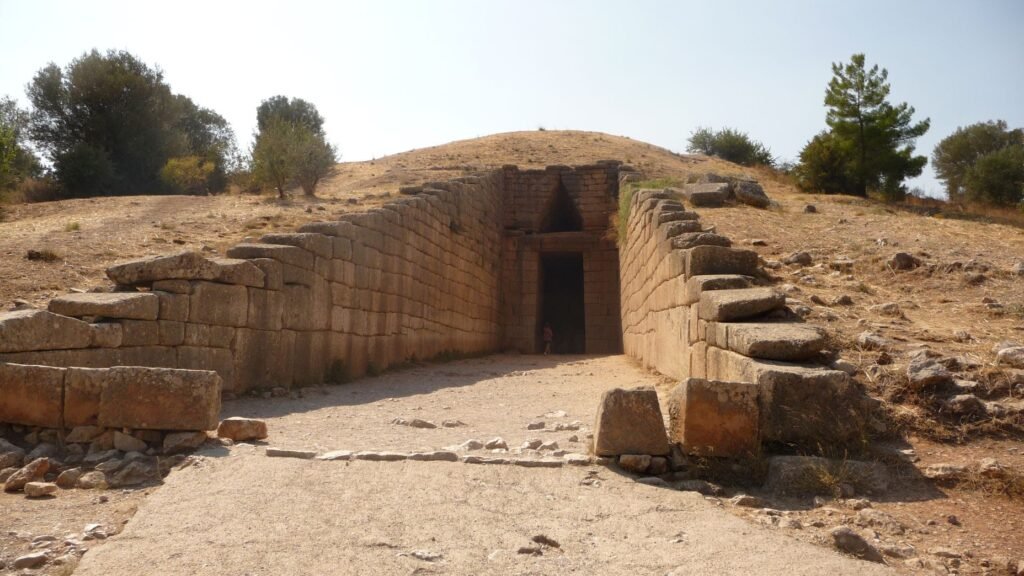
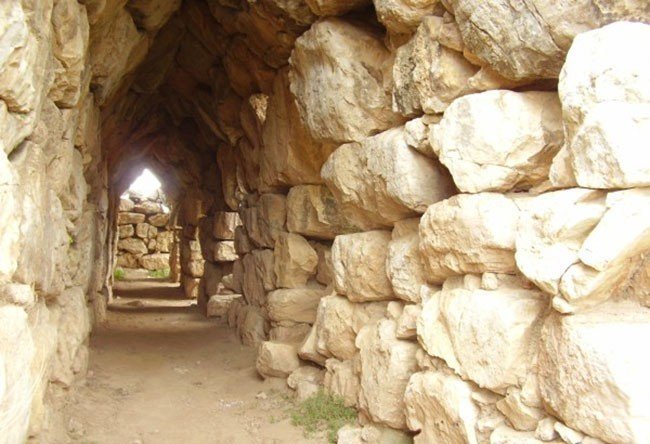
Agamemnon’s Tomb is in the northeast of Argolis, to the northeast of its main city Argos. Agamemnon’s Tomb was the tomb of the legendary King of Mycenae, Agamemnon and connected the city ruins via an underground passage.The Treasury of Atreus or Tomb of Agamemnon is a large tholos or tomb constructed between 1300 and 1250 BCE.
Today: The Tomb of Agamemnon is one of a number of ‘beehive’ tombs found in the vicinity of the ancient site of Mycenae. It is by far the best preserved of these tholos tombs.
Corinth Canal


The canal crosses the Isthmus of Corinth, thus separating the Peloponnese peninsula from the main part of Greece, making it theoretically an island. The cities of Corinth and Loutraki lie almost at the mouth of the Corinth Canal.The canal of the Isthmus of Corinth, has constituted an inspiration for centuries and was completed 25 centuries after the conception of its idea.
Today: The Canal is the most favorite itinerary for cargoes and transports among Mediterranean and Black Sea ports because it is the safest and cheapest access route.
Temple Of Apollo Epicurius At Bassae


The Temple of Apollo Epicurus was built between 420 and 400 BC. it appears to be the only surviving witness of ancient southwestern Arcadia at its peak.The classical Greek pillared temple was dedicated to the god of healing.
Today: One of the best-preserved monuments of classical antiquity and a hidden gem that survives largely intact.
Theater in Epidaurus and the sanctuary of Asclepius
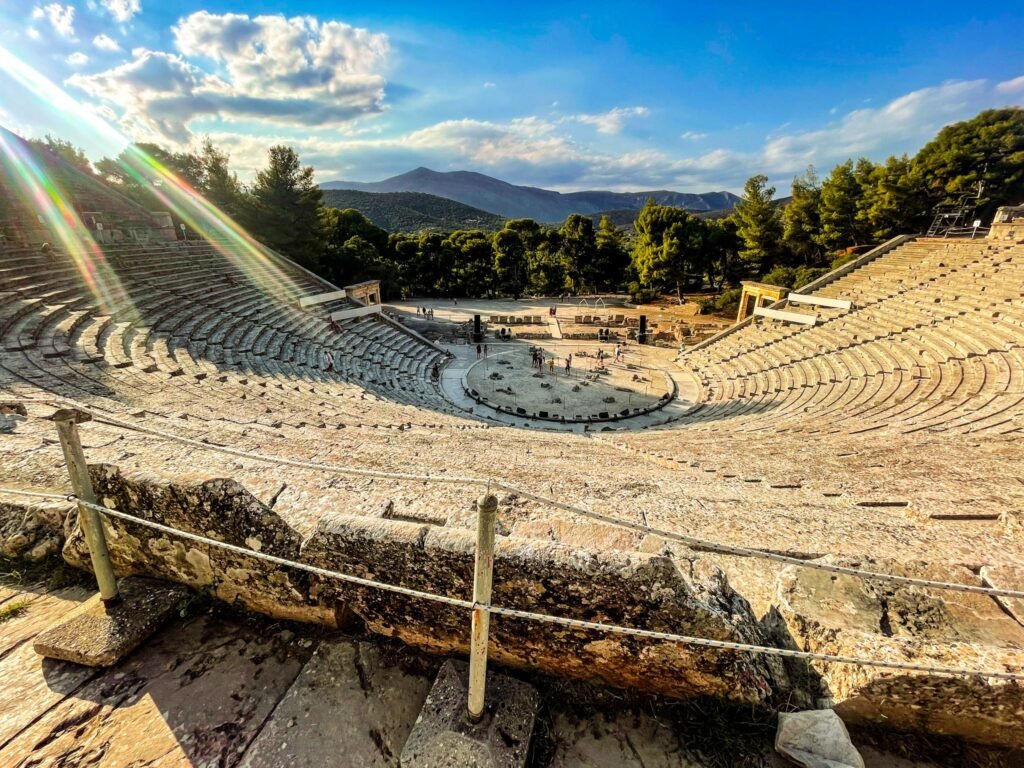

The Theatre at Epidaurus is recognised as one of the finest examples of an ancient Greek theatre. The meticulous attention paid to the design and construction of the Theatre at Epidaurus provided acoustics that delivered a quality sound that we would consider unimaginable for the Hellenistic period.The Theatre of Epidaurus was used predominantly to support the healing goals of the Sanctuary of Asclepius. Ancient Greek medicine was holistic. The consumption of medicines was integrated within a religious environment that accentuated the beseeching of gods for cures of body and mind. In this respect the Theatre of Epidaurus provided music and plays to offer calming and distracting experiences.
The theater was a central part of the cultural and religious life of the sanctuary. It was likely used for dramatic performances, musical events, and religious.
Today: the monument attracts a large number of Greek and foreign visitors and is used for the performance of ancient drama plays. The first modern performance conducted at the theatre was Sophocles’s tragedy Electra. It was played in 1938, directed by Dimitris Rontiris, starring Katina Paxinou and Eleni Papadaki.
Olympia
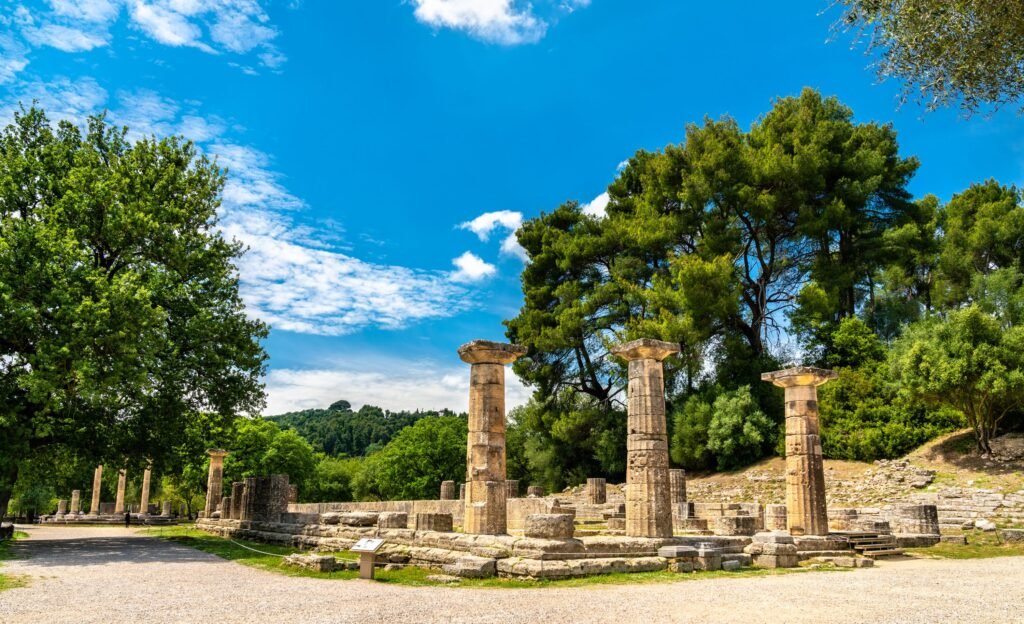
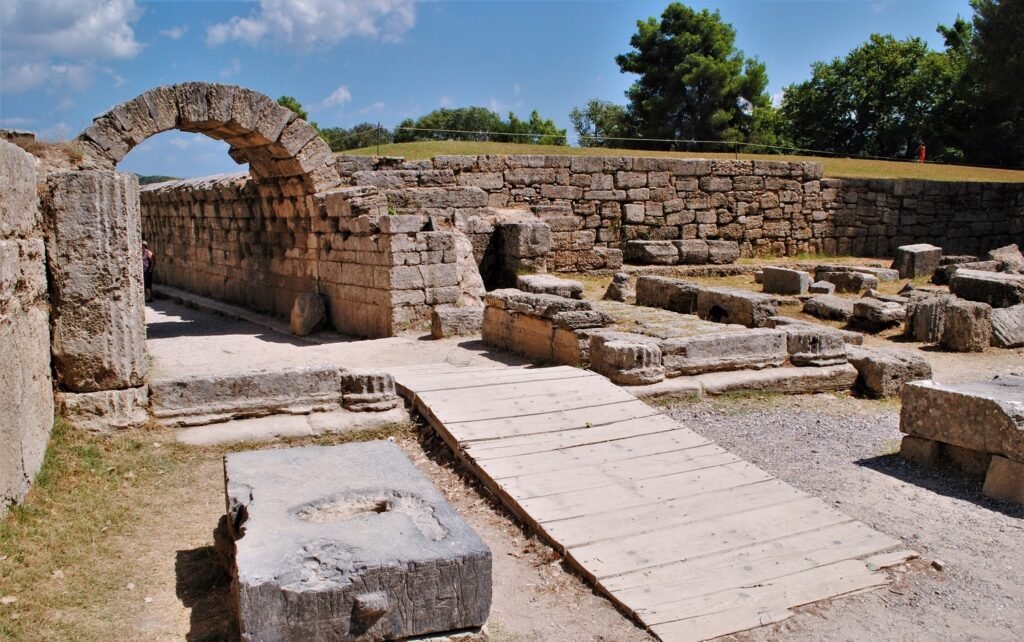
Olympia, ruined ancient sanctuary, home of the ancient Olympic Games, and former site of the massive Statue of Zeus, which had been ranked as one of the Seven Wonders of the World. Olympia is located near the western coast of the Peloponnese peninsula. The first ancient Olympic Games can be traced back to Olympia in 776 BC.
Today: trip to Ancient Olympia archaeological site, full of plane trees, pines, poplars and olives it’s a ood choice. Birthplace of the Olympic Games so much is interesting at this legendary destination in Greece.
Palamidi Fortress
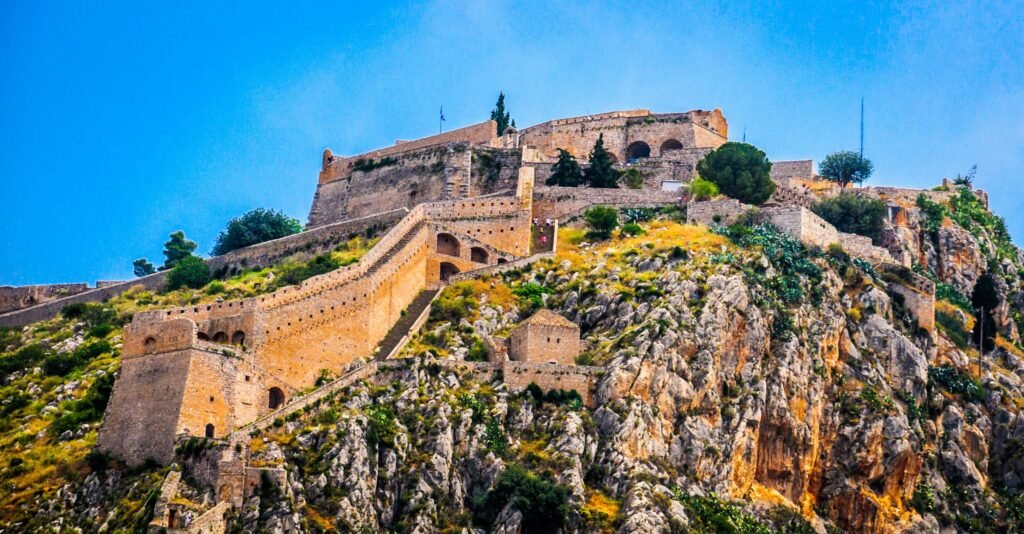

Fortress in Nafplio – Perched atop a sheer 216-meter high hill, this impressive castle boasts a rich history intertwined with the enchanting town of Nafplio. The fortress was built by the Venetians between 1711 and 1714 during their second occupation of the area, although the site itself had been fortified since ancient times. The purpose of Palamidi Fortress was primarily to protect the city of Nafplio and its harbor from invaders and to serve as a strategic military stronghold in the region.
Today: With its storied past and breathtaking surroundings, this landmark is a must-visit for history enthusiasts and travelers seeking to delve into the heart of Greece’s rich cultural tapestry.
Monemvasia

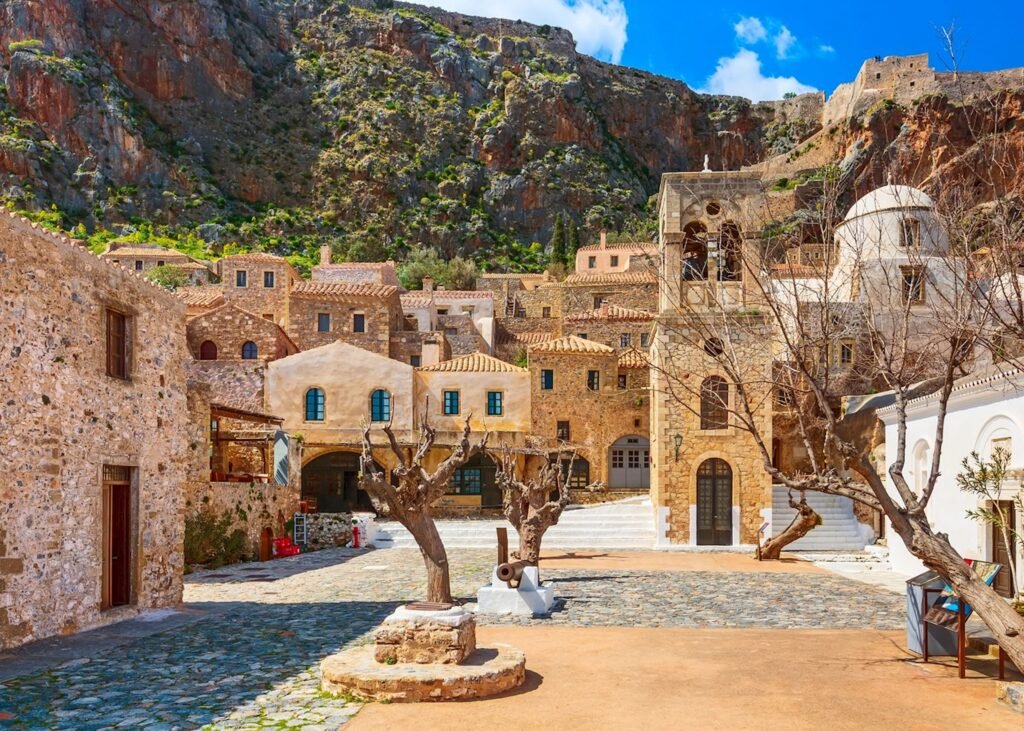
Monemvasia became an island when a strong earthquake separated it from the mainland at the beginning of our era. From then on, it could only be reached through a narrow isthmus with a drawbridge. This is probably where the name comes from: monemvasia, meaning the only entrance. The site was first occupied in 3500 BC, making it one of the oldest known sunken cities in the world. Monemvasia is a huge rock rising from the sea on the coast of the Peloponnese, connected to the mainland by a narrow road.
Today: From the mainland, it looks like a giant rock, hidden from view. Today, a small causeway links it to the mainland and the new town called New Monemvasia.
Mystras ancient city
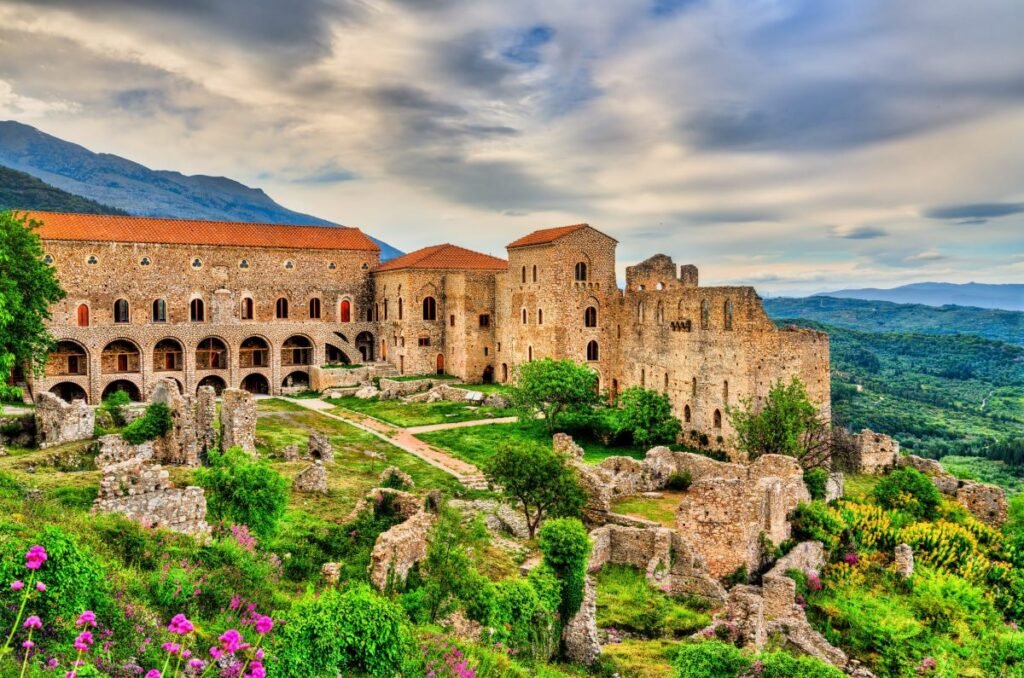
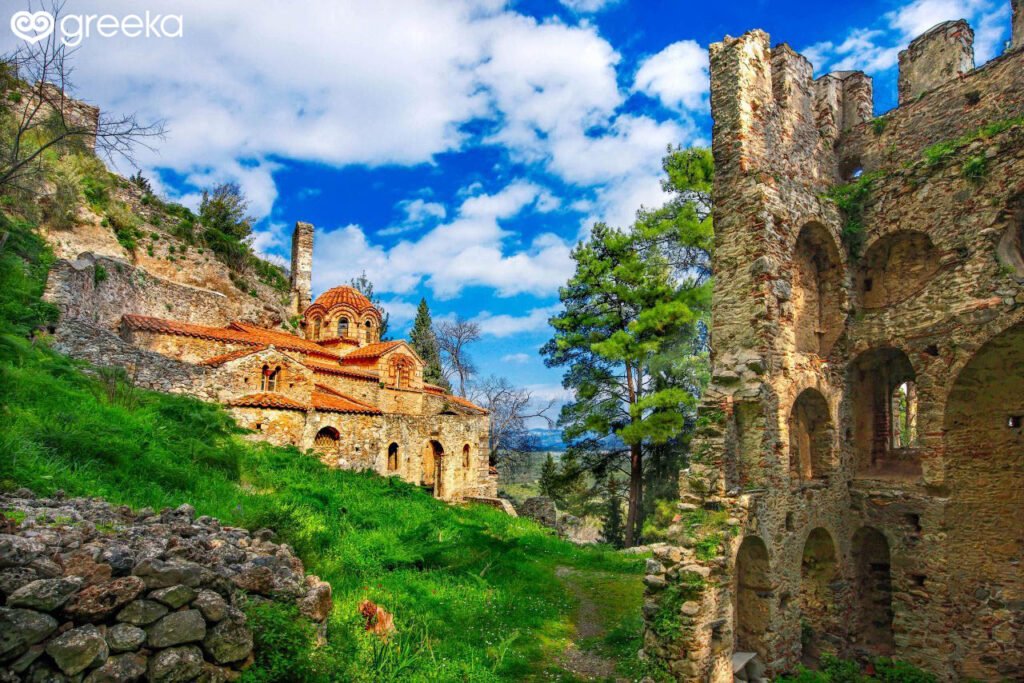
Mystras is located in Laconia, five kilometers northwest of Sparta, on a rocky hill at the foot of Taygetos. The deserted castle with powerful Byzantine state. The establishment of Mystras was followed by the first conquest of Constantinople by the Crusaders in 1204. After the division is of the Byzantine Empire, the Frankish Peloponnese granted Villehardouins by establishing family of the Principality of Achaia and a few years later, in 1249, the Frankish prince William II Villehardouin built the castle of Mizithra or Mystras – as it is now known – at the top of the hill. The name derives from a Greek cheese (mizithra), due to the shape of the mountain or the profession of the owner of the hill.
Today: Mystras site is divided into three interconnected sections – the kastro (the fortress on the summit), the hora (upper town) and the kato hora (lower town). Mytsras is one of the few well-preserved Byzantine settlements. In an effort to give back Mystras’ previous glory, Archaeological Service conducts restoration work.
Ancient Sparta
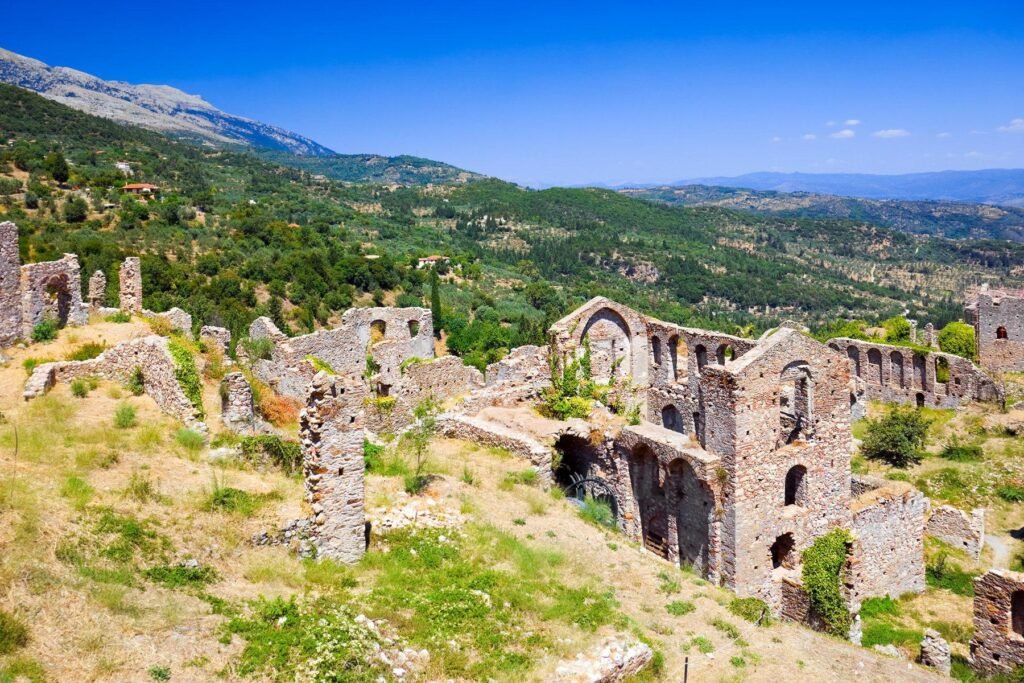

Sparta, the ancient capital of the Laconia district in the southeastern Peloponnese. Sparta was a warrior society in ancient Greece that reached the height of its power after defeating the rival city-state of Athens in the Peloponnesian War. (431-404 BC) Spartan culture focused on loyalty to the state and military service.
Today: Modern Sparta, the capital of the Laconia Prefecture, lies at the eastern foot of Mount Taygetos in the Evrotas River Valley. The city was built on the site of ancient Sparta, whose Acropolis lies north of the modern city. Today, Sparta has retained its good design, boasting large squares and wide, tree-lined streets, while many older buildings remain within the Evrotas Valley.
